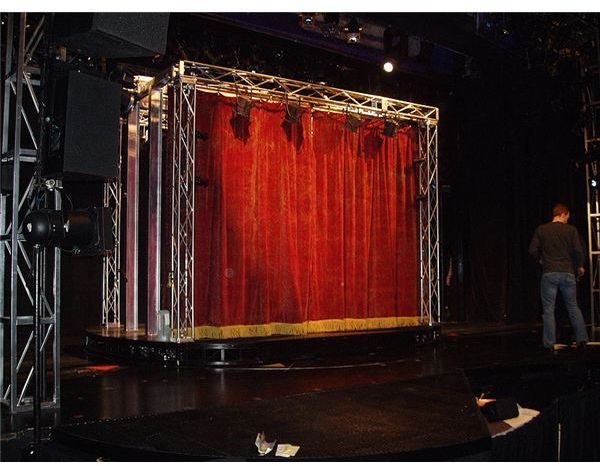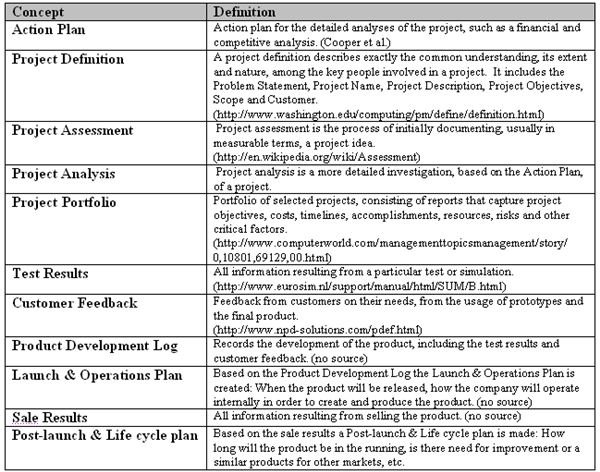Stage-Gate Examples: Getting Through Gates & Stages
What Is the Stage-Gate Process?
Simply put, the Stage-Gate Process, according to an article by David Kirkpatrick: New Product Development: From Idea to Market, “…is a cross-functional approach that involves many different business function areas throughout the entire product innovation cycle.”
Market research is performed through all stages and not in the normal fashion of waiting for the project or product completion and then client-testing begins. This innovative theory has become the fastest way to get from production to product and from product to customer with a gated-control process.
The process includes directives as seen in the screenshot to the left (click on image to enlarge); however, what are some examples of utilizing the Stage-Gate process?
If you were to use the Stage-Gate process, along with implementing this methodology, you would need some stage-gate examples.
Image Credit (Wikimedia Commons)
Stage-Gate Example

As in the diagram to the right (click to enlarge) each stage of the project or product development is completed and then must pass through a managerial gate before a project team moves forward to the following stage. Stages in the Stage-Gate Process often are developed simultaneously as well.
Suppose a coffee company is looking to manufacture a coffeemaker that allows for one-cup processing with no filters; cup-sized grounds are utilized that come in individual serving sizes and a water carafe connected to the coffee maker must be kept full so the coffeemaker is ready to go at a moment’s notice.
While coffeemakers such as this do exist, this is a good stage-gate example to utilize. Let’s call our coffeemaker the Grinder’s Delight.
If we look at the Stage-Gate diagram above and utilize the various gates and stages, we can proceed with our Grinder’s Delight stage-gate example in the following sections.
Image Credit (Wikimedia Commons)
Gate 1 and Stage 1
- Gate 1 (Idea) - Here, we have the preliminary product—Grinder’s Delight. If the idea is feasible through analysis then it proceeds out of Gate 1 and to Stage 1. Let’s say here the idea passes analysis so we move to the scoping stage, or as in the Stage-Gate Process, the “go” stage.
- Stage 1 (Scoping) - Here the ideas begin on the features of the Grinder’s Delight. The project team feels it has all the necessary elements that a customer would want and offers it to the gate.
Gate 2 and Stage 2
- Gate 2 (Second Screen) – In this second gate, an analysis reveals that the Grinder’s Delight is only able to achieve an 8-ounce cup of coffee, but what if a customer wants the option to have an 8-ounce or 12-ounce cup? This is called the “kill” gate process and managers prompt for attention to the Stage 1 team. Once the Stage 1 team has included the feature for the 12-ounce cup options it can pass through Gate 2.
- Stage 2 (Build Business Case) – In Stage 2, a team can cross-functionally be working on market research, customers’ wants and needs, pricing, and competition as well as manufacturing techniques and processes. These processes once they are deliverables must again go through a gate—Gate 3.
Gate 3 and Stage 3

Gate 3 (Go to Development)** – Let’s say here that all is well with the Stage 2 team; however, the suppliers of needed parts for the Grinder’s Delight can’t be pinned down or determined. Again, although part of Stage 2 is set, the Stage 2 team vendor problem becomes a “kill” and doesn’t pass through Gate 3.
- Stage 3 (Development) – Here again, in the development stage, we can see a problem if the manufacturing is hindered due to vendor problems. While the Stage 2 team may be able to run with designs and such, they can only purse the final manufacturing process once the managers of Gate 3 have given a “go” on the vendor situation.
Image Credit (Wikimedia Commons)
Gate 4 and Stage 4
- Gate 4 (Go to Testing) – Once the product is given to Gate 4 for analysis, it should be ready for testing. Problems at this gate level are either given a go or killed and returned for improvements.
- Stage 4 (Testing and Validation) – Still the Stage 4 team may be able to run with testing on initial product testing to see what is missing. They can return back through Gate 4 for updates or communicate with the Stage 3 team on when suggested and approved changes will be available.
Gate 5 and Stage 5
- Gate 5 (Go to Launch) – Our product of the Grinder’s Delight must be ready to roll before it can pass the team in Gate 5. This means everything from concept to marketing principles to manufacturing and testing must have been accurately and satisfactory resolved before the product goes to a real-time launch.
- Stage 5 (Launch) – Here, our Grinder’s Delight is launched, and perhaps even a new stage-gate example can begin using these same stages and gates on consumer acceptance and market needs.
Wrapping Up Stage Gate Examples

Because the Stage-Gate Process is more iteration-driven where testing and acceptance are performed throughout the project and not at the end, the desired outcome of the project is usually shortened.
Again, stage-gate examples can be utilized for a product or a service and even a project timeline. If you are new to the Stage-Gate Theory, you can learn more about it right here on Bright Hub.
Image Credit (Wikimedia Commons)
